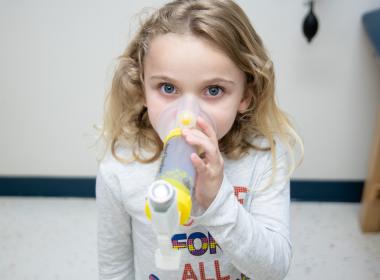Article
Black Femicide: A Silent Public Health Crisis By Sarah Gedeon:
Article
Meet Diana: Moving up the Career Ladder Without Moving off the 6th Floor When Diana started working at Connecticut Children’s as a Patient Care Assistant, she didn’t know her whole life was about to change. But once she discovered the magic of working with children and the camaraderie within the community, she knew she found the exact place she wanted
Article
6 Tips for Staying Safe this Halloween By Kevin Borrup, DrPH, JD, MPA:
Article
Pediatric Asthma Management Programs Enhance Quality of Care By Jessica Hollenbach, PhD: By: Jessica Hollenbach, PhD Asthma affects more than 8% of youth in the United States making it one of the most prevalent chronic illnesses affecting young people, and it disproportionately affects children living in underserved communities. The complexity of current guidelines
Article
Meet Courtney: Finding Inspiration in the Teeniest of Tiny Patients After a series of clinical rotations at Connecticut Children’s, Courtney didn’t just know mentally it was the right place for her to start her nursing career – it felt like the right place, too. Three and a half years later, she continues to grow and evolve as a nurse. And that
Article
Honoring Women’s History Month with Kids Women’s History Month provides an opportunity to teach children about the tremendous contributions women have made in the United States in a variety of fields, including art, science, medicine, math, education and other areas. At Connecticut Children’s, we honor Women’s History
Article
Pediatric Residents Address Health Needs of Refugee Children They are among the most vulnerable children we see as patients. They are refugees who have been displaced from their countries due to violence and political unrest. They are seeking to rebuild their lives with their families here in Connecticut, a world away from the countries Article
Not So Novel: COVID-19 Exposes Inequities in Vulnerable Communities By Lenora Codrington, DO: By: Lenora Codrington, DO COVID-19 is called the great equalizer with the ability to affect the young, old, rich and poor. However, COVID-19 has exposed concerning inequities, as preliminary studies have shown that it disproportionately affects people of color with higher
Article
Reflections of a Pediatric Resident By: Amritha Patel, MD As a graduating third year pediatric resident, I have been reflecting on the last three years of training along with the journey I took to get to this point. Many of the experiences that led me to the field of medicine were based around community service on
Marketing Landing Page
Register For Emails Article
The Pandemic's Expected Impact on Traffic Crashes By Amy Watkins, MPH: By: Amy Watkins, MPH We have no precedent to tell us with certainty how current restrictions, economic changes, and fears of infection associated with COVID-19 might affect traffic patterns, crashes and fatalities. Instead, we can look to how changes in the economy have affected
Article
10 Apps to Help Young Kids Deal With Their Emotions By Melissa Santos, PhD: When your young child has big feelings in their little body, they may not know what to do about it. To help, you can work with them on a coping toolbox, mindfulness exercises or quick resets . Or, if you’re into wellness apps, you can turn to your phone: There are a growing
Article
Safe Sleep Practices Protect Babies By Amy Watkins, MPH: By: Amy Watkins, MPH Safe sleep environments are critical to protect babies from harm. Each year in the United States, approximately 3,500 infants die unexpectedly during sleep. This can happen from accidental suffocation, sudden infant death syndrome (SIDS) or unknown causes